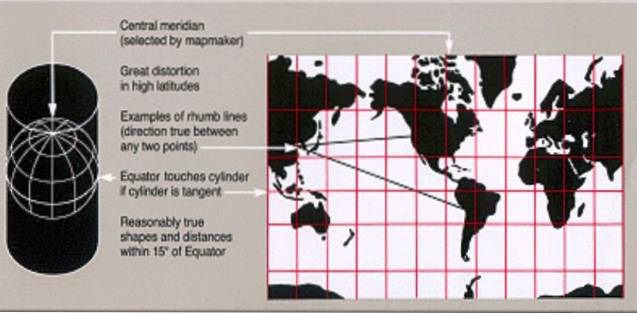
Glasgow Coma Scale All you need to know

The Glasgow coma scale it is one of the most popular observation tools in neurological analysis. Its application is widespread throughout the world thanks to its particularities and that is why today we want to tell you what the Glasgow coma scale, what is its history and some of its most important characteristics.
What is the Glasgow Coma Scale?
The Glasgow Coma Scale also known by its acronym in English GCS is a commonly used tool for assess the degree of consciousness of a patient after an accident.
This tool is associated with the neurological application, it is applied based on 3 fundamental parameters, namely: Motor Response, Verbal Response and Ocular Response.
How is the Glasgow Coma Scale applied?
Taking into account the response area to be evaluated, certain procedures are carried out to analyze the patient's condition with respect to each component. The application is generally done as follows:
Motor response
6. Obey orders
5. Location of pain
4. Withdrawal and bending
3. Abnormal flexion
2. Extension
1. No answer type
Verbal response
5. He talks and is oriented
4. He talks but is disoriented
3. Use inappropriate words
2. Use unintelligible sounds
1. No answer type
Ocular response
4. Spontaneous response
3. Response when speaking to him
2. Response to pain
1. Without any response
This tool is applied in cases of head trauma patients , and it must be done quickly and objectively.
With objective we mean that the evaluator must avoid going around the bush, that is, he cannot fall into subjectivities such as saying that the patient is drowsy, stuporous or unconscious, since they are opinions that do not allow the patient to be effectively evaluated within their process.
Taking into account the ambiguities to which the foregoing may fall, the Glasgow Como Scale was institutionalized, in order to efficiently watch over the lives of patients.
How is the Scale analyzed?
As we mentioned previously, the Glasgow Coma Scale uses 3 fundamental parameters that refer to Motor Response, Ocular Response and Verbal Response. All in turn, have subcategories that allow determining the patient's condition more effectively.
The minimum score is 3 and the maximum score is 15. This is the result of the sum of the values of each category. The idea is that the evaluator breaks down each section and then references the best answer obtained. Then the result of each of the components must be added, and this will be the number that will determine the score.
Regarding evolution, The Glasgow Coma Scale should be applied consistently during fully determined intervals, in order to see the evolution of the patient after the accident, and thus be able to take the necessary measures in each part of the process.
After performing this procedure systematically, the assessor can be clear about the patient's state of consciousness and create a initial forecast. In the same way, according to the findings, you can determine what are the procedures or treatments to follow..
History of the Glasgow Coma Scale
The Glasgow Coma Scale was created by two English neurosurgeons named Graham Teasdale and Bryan Jennett. The presentation of The Scale was published in 1974 in the British journal "The Lancet", through a published article entitled "Assessment of coma and impaired consciousness. A practical scale", which translates "Evaluation of coma and altered state of consciousness. A practical scale".
Initially, the Glasgow Coma Scale was designed to evaluate with a maximum sum of 14 points. Then in 1976 the posture of decortication or abnormal flexion was added within the motor category, to remain at 15 points as it is used today.
Uses of GCS today
In our time, in addition to using the Scale to evaluate the conscience level in patients who have suffered head injuries, its application has been extended to other areas where there are patients with acute diseases.
Among the most generalized patients are those who are in intensive care units, it is also applied in confused patients in geriatric areas and in general in emergency services in which patients with strong blows or symptoms of confusion are treated.
Like all diagnostic tools, the GCS continues to evolve and its use is being perfected to make the necessary improvements that are much better adapted to patients, through the findings found by the evaluators in the moments of observation..
Benefits of the Glasgow Coma Scale
According to what you have read so far, I think it is more than evident that the Glasgow Coma Scale is a very useful diagnostic tool.
On the one hand, its timely use within the framework of trauma care protocols can help diagnose the real state of patients and thereby determine the care procedures that can not only help, but even save the lives of patients..
Although some patients become a challenge for health care personnel, the structure of the Scale allows for fewer margins of errors when diagnosing.
The application of the Glasgow Coma Scale It is extremely simple and for this reason it is not necessary for medical personnel to have high degrees of specialization to apply it to their patients.
Its effectiveness has been proven in many ways, in fact one of the most important findings is that the head injury score has served to determine, for example, in which cases death can be expected, or in which if there are recovery options, no matter how serious. appear to be the case at first glance.
Broadly speaking, these are the most important things you need to know about the Glasgow Coma Scale. Knowing this information is vital if you are a health professional, because knowing how to handle the tool or not can make a difference.



Yet No Comments